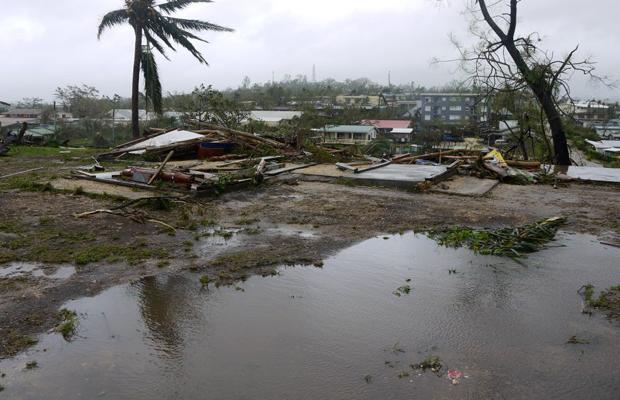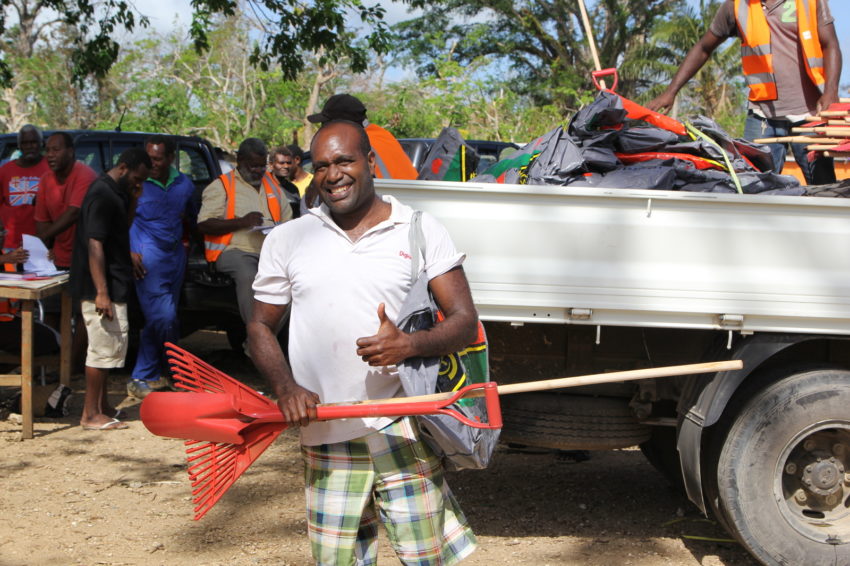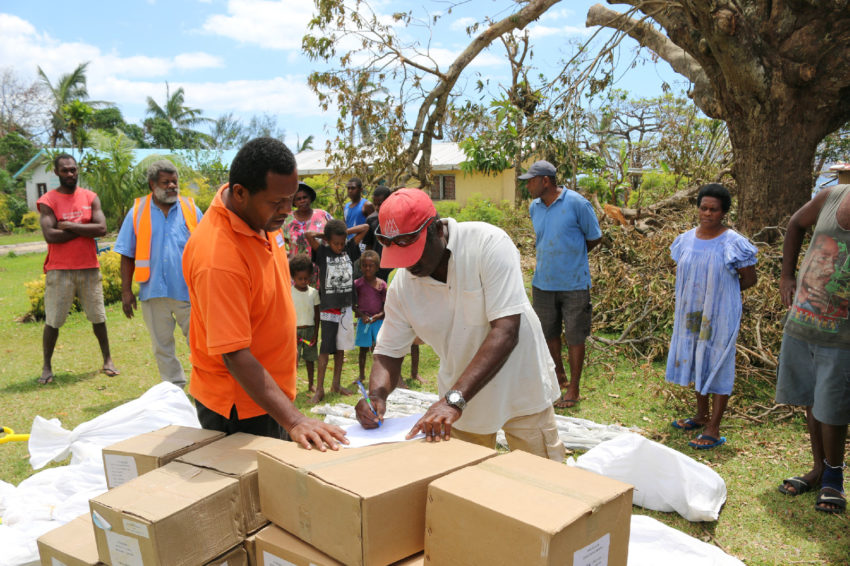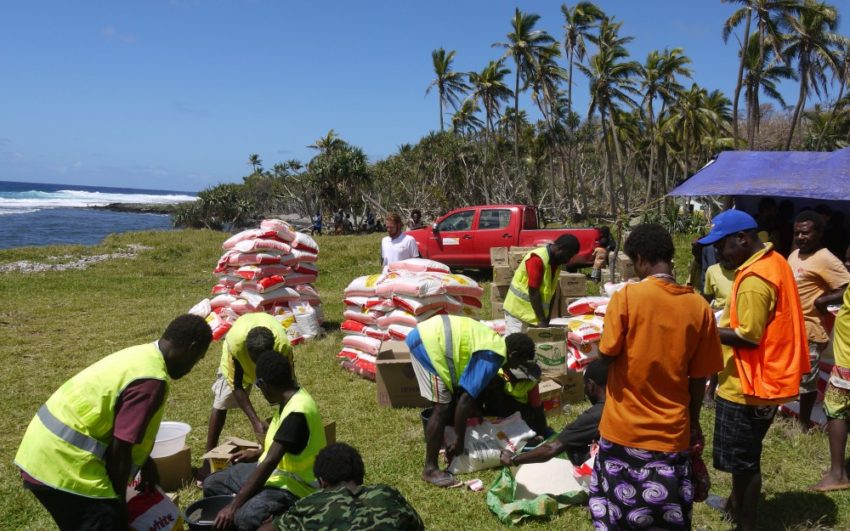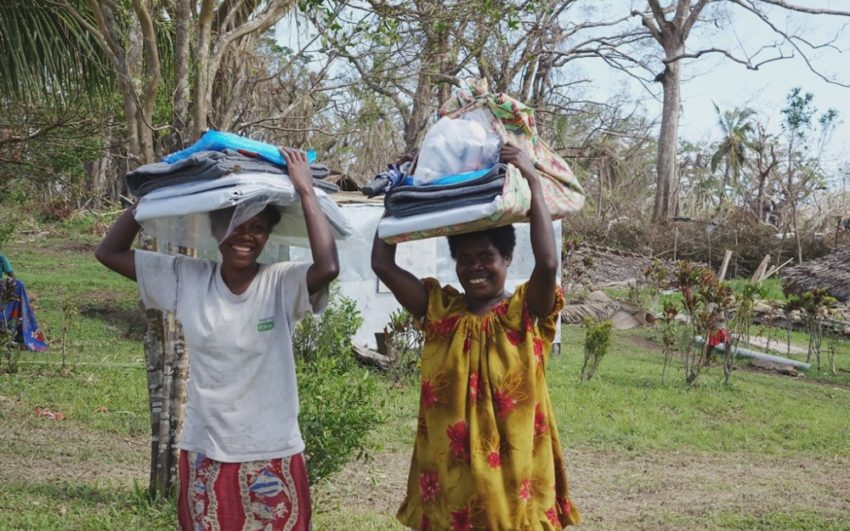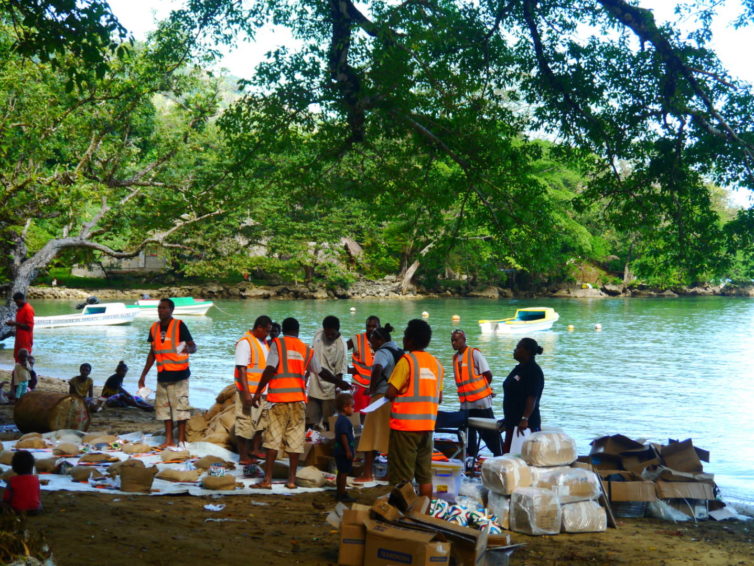On March 13, 2015, Cyclone Pam, a Category 5 storm, struck Vanuatu, an archipelago of over 80 islands in the South Pacific with a population of about 270,000 people. The cyclone’s eye passed near Efate Island, where the capital, Port Vila, is located, with sustained winds up to 160 miles per hour.
The storm impacted 188,000 people — more than half of Vanuatu’s population — across all six provinces. The southern provinces of Tafea and Shefa were hardest hit, with 50–90% of shelters destroyed. Most families in Vanuatu at the time of the disaster lived in rural, agricultural communities with homes made of wood and mud, which were highly vulnerable to storms and flooding.
Thanks to early warning systems, most residents were able to seek safe shelter, keeping the death toll at 24. The cyclone, however, caused significant damage to food stocks, water sources, and crops, leaving communities hungry and vulnerable.
Cyclone Pam: Facts, FAQs, and how to help
- Fast facts: Cyclone Pam in Vanuatu
- Where is Vanuatu located?
- Is Vanuatu at high risk for natural disasters?
- How can I help people affected by disasters?
- Cyclone Pam response: World Vision’s impact
>Fast facts: Cyclone Pam in Vanuatu
- Cyclone Pam struck Vanuatu on March 13 and 14, 2015, as a Category 5 storm.
- The cyclone was one of the worst Pacific Ocean storms in history, affecting approximately 188,000 people.
- The cyclone caused widespread destruction, with 95% of crops in affected areas wiped out, along with significant damage to food stocks and water sources.
- At its peak, Pam had maximum sustained winds of 165 miles per hour.
- The storm claimed the lives of 24 people and left an estimated 166,000 people in need of immediate food aid.
- Vanuatu is ranked as one of the countries most at risk from natural hazards and extreme weather events.
Where is Vanuatu located?
Vanuatu, formerly New Hebrides, is an archipelago of 80 islands in the South Pacific Ocean, east of Australia. Vanuatu, about the same size as the state of Connecticut, is about as far from Australia as Los Angeles is from Denver.
Is Vanuatu at high risk for natural disasters?
Vanuatu is highly susceptible to natural disasters, including tropical storms, earthquakes, tsunamis, and volcanoes. Many areas are low-lying and prone to coastal flooding. Due to its small size, any significant disaster, such as a tropical storm, can impact the entire country, including the capital of Port Vila. Challenges in transportation and communication between islands and in rural areas can complicate recovery efforts.
Approximately 64% of Vanuatu’s population is exposed to natural hazards. Families relying on subsistence agriculture and the 10% of those living in extreme poverty are vulnerable to these shocks. Cyclone Pam, for example, destroyed crops needed for food and devastated banana and coconut plantations, crucial sources of income.
Vanuatu has made strides in disaster risk management, focusing on strengthening its monitoring systems, warning centers, and investments in infrastructure.
How can I help people affected by disasters?
- Pray: Join us in praying for children and families in Vanuatu and other countries in the Asia-Pacific region, where poverty and recurring disasters affect communities.
- Give: Your gift today will help deliver essential care to vulnerable children and families affected by emergencies worldwide.
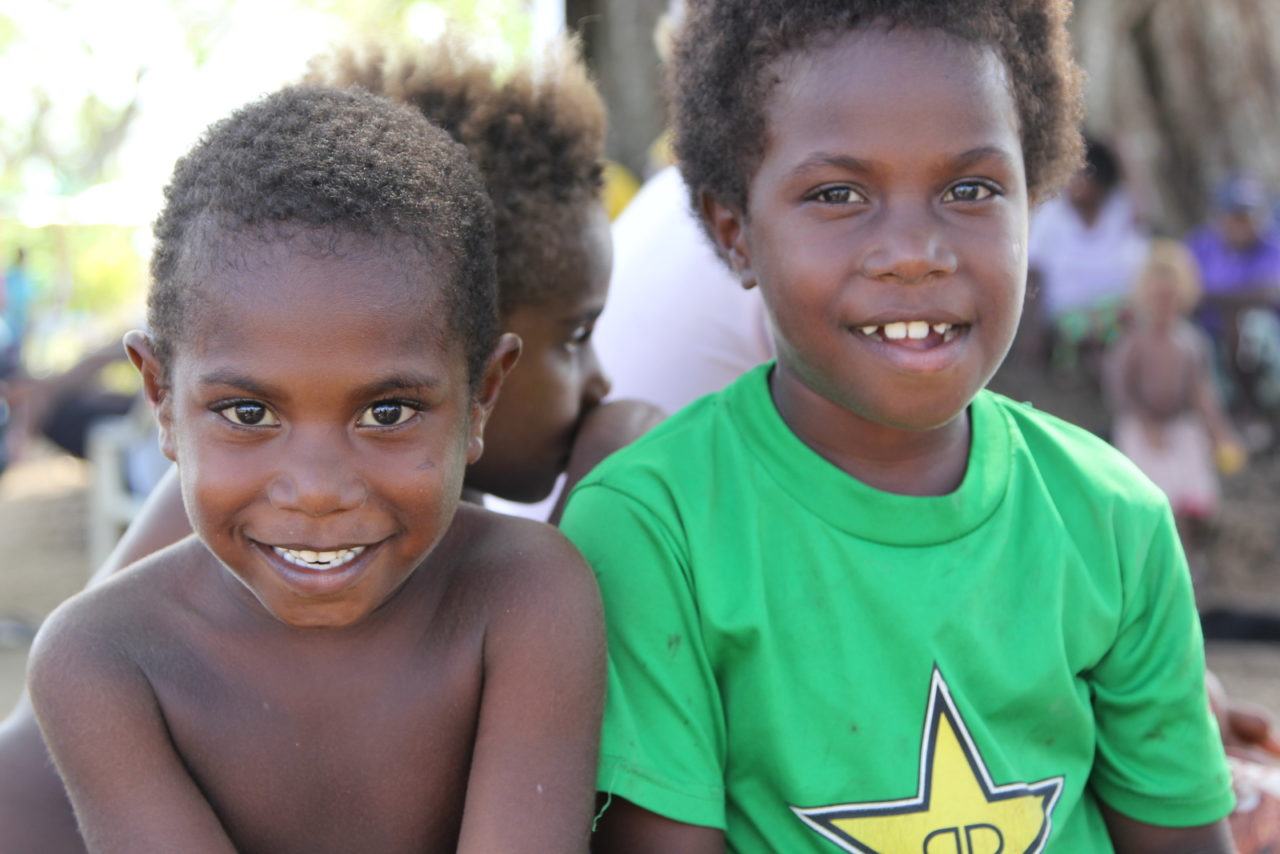
Cyclone Pam response: World Vision’s impact
World Vision began working in Vanuatu in the early 1980s with education, training, and income-generating projects. We expanded our programming to include water, sanitation, and hygiene (WASH), agriculture, economic empowerment, education, early childhood development, and disaster risk reduction and preparedness.
Preparation (Early March 2015):
Here’s how World Vision helped communities prepare for Cyclone Pam:
- Pre-positioned vital supplies (water, food, blankets, shelter kits, and more) in high-risk areas.
- Warned communities about the impending cyclone, offering safety guidance.
- Trained communities in emergency and rescue techniques.
“Our World Vision staff has been amazing — visiting communities to warn them of the cyclone, helping families to protect their houses, and informing villages at risk of where evacuation centers are — all while preparing their own families and homes for what is on track to be Vanuatu’s most devastating cyclone in almost 30 years,” said Chloe Morrison, World Vision staff communicator, ahead of the storm in March 2015.
Immediate action (March 13-16):
- Distributed pre-positioned kits to more than 800 people on March 14.
- Conducted needs assessment in 16 communities, including Pentecost, Efate, Erromango, and Tanna islands.
One month later:
- Delivered essential aid to 10,000 people.
- Vaccinated over 6,000 children against measles in collaboration with the Ministry of Health and World Health Organization.
Three months later:
- Aided 30,000 people with water system repairs, improved sanitation, back-to-school kits for 150 schools, and seedlings, cuttings, and root crops. Our programming also supported awareness training on gender-based violence prevention in crisis situations.
Six months later:
- Assisted 55,000 people with food, household items, and water source rehabilitation.
- Delivered emergency food aid, seeds, tools, soap, diapers, cooking pots, spades, and tarpaulins to severely impacted Tanna Island.
- Delivered water filters to 600 households on Malo Island.
- Distributed nearly 29,000 free meals to close to 1,900 vulnerable people.
One year later:
- Delivered food to over 55,000 people, restored access to clean water in 23 communities, and supplied 80 preschools and primary schools with materials.
